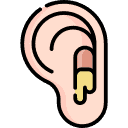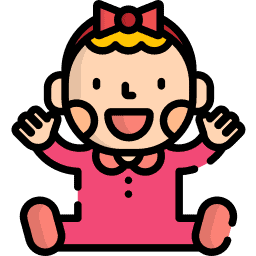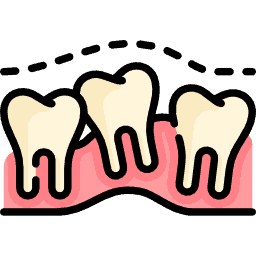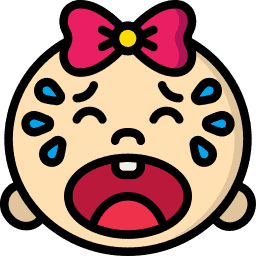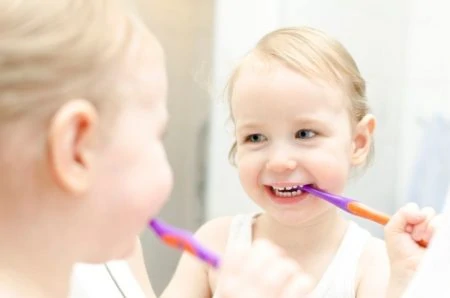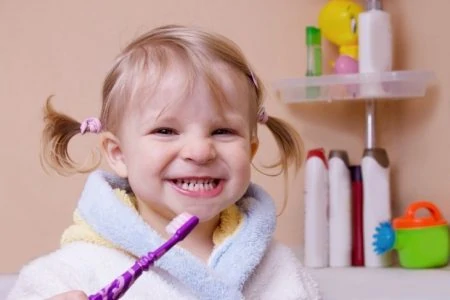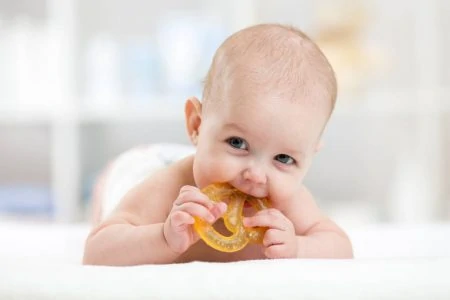With five kids, I know exactly how stressful it is when a baby is cranky and you can’t figure out why. Is it just a new tooth popping through, or is it an infection requiring antibiotics? You don’t want to drag a sick child to the doctor unnecessarily, but you also don’t want to ignore a serious health issue.
To help you decide, we have broken down the specific differences between teething and sickness, how to soothe your baby in both scenarios, and when to make that doctor’s appointment.
Key Takeaways
- Teething signs: Look for chewing on objects, excessive drooling, a facial rash, mild fussiness, and gum inflammation.
- Ear infection signs: Watch for high fevers (over 100.4°F), cold symptoms (congestion/cough), fluid draining from the ear, and pain that worsens when lying down.
- Comfort measures: Soothe teething with cold washcloths and massage; manage ear pain with warm compresses and doctor-approved pain relievers.
- When to call the doctor: Seek help if your baby has a high fever, is inconsolable, refuses fluids, or if symptoms persist more than 24 hours.
Signs of Teething
Teething is a physiological milestone, not an illness. While uncomfortable, it usually presents with mild, localized symptoms. Here is what to look for when those pearly whites are breaking through.
Gnawing and Biting
When a tooth presses against the gum surface, counter-pressure feels amazing to a baby. Your little one will likely try to jam anything available into their mouth.
This includes toys, crib rails, and your fingers. Be careful during breastfeeding or playtime, as those gums are harder than they look.
Excessive Drooling
Teething stimulates the salivary glands. Since babies have not yet mastered the art of swallowing all that extra fluid, it ends up on their shirts, bibs, and your shoulder.
This droolfest usually starts around three or four months of age, which is often before the first tooth actually cuts through (1).
Teething Rash
The constant flow of saliva can irritate the sensitive skin around the mouth. You might notice a red, chapped, or bumpy rash on the chin, cheeks, neck, or chest.
Teething rash is distinct from viral rashes because it is localized where the drool pools. Keeping the area dry and using a barrier cream (like Vaseline) can help prevent it (2).
Mild Fussiness
Pain usually comes in waves as the tooth moves. Your baby might be happy one minute and whiny the next. However, a teething baby is generally distractible. If you can soothe them with a toy, a cuddle, or a change of scenery, it is likely teething rather than an illness.
Ear Pulling and Cheek Rubbing
This symptom often confuses parents. Nerves in the gums travel to the ears and cheeks. When gums throb, that pain can radiate outward.
Babies may tug on their ears or rub their faces to relieve this “referred pain.” If this is the only symptom and there is no fever or congestion, it is likely just teething.
Slight Temperature Elevation
Teething does not cause a true fever. You might see a very slight rise in body temperature (around 99°F or 100°F) the day a tooth erupts.
However, if the thermometer reads 100.4°F (38°C) or higher, do not blame the teeth. That is a fever and indicates the body is fighting an infection (3).
Fever Myth
Signs of an Ear Infection
An ear infection (otitis media) is a bacterial or viral infection behind the eardrum. It is painful and requires monitoring or treatment. Unlike teething, ear infections are usually accompanied by signs of illness.
High Fever
Fevers are the body’s way of killing bacteria or viruses. A temperature of 100.4°F (38°C) or higher is considered a fever.
For infants under 3 months, any fever is a medical emergency. For babies 3 to 6 months, call the doctor for a fever of 102°F or higher, or if they seem notably ill.
Cold Symptoms
Ear infections rarely appear out of nowhere. They frequently follow a common cold, flu, or allergy attack. Congestion causes the eustachian tubes to swell, trapping fluid in the middle ear where bacteria can grow.
If your baby has had a runny nose, cough, or congestion recently, and now seems suddenly worse, suspect the ears.
Pain Worse When Lying Down
This is a major clue. When a child lies flat, pressure builds up in the middle ear, making the pain significantly worse.
If your baby is relatively happy during the day but screams the moment you lay them down for a nap or bedtime, gravity is likely aggravating an infected ear.
Fluid Drainage or Bad Smell
If you see yellow, brown, or white fluid draining from the ear canal, or if you notice a foul smell coming from the ear, this indicates a ruptured eardrum.
While this sounds scary, it actually relieves the pressure and pain. However, you must see a doctor immediately to check the infection and ensure proper healing.
Refusing to Eat
The sucking and swallowing motion changes pressure in the ears. If your baby is hungry but pulls away from the breast or bottle screaming after a few seconds, their ears are likely hurting.
Inconsolable Crying
Unlike the on-and-off fussiness of teething, the pain from an acute ear infection can be relentless. If your baby is crying intensely and cannot be distracted or soothed by your usual tricks, something deeper is wrong.
How to Help a Teething Baby
If you have determined it is teething, your goal is simply comfort. Here are safe ways to soothe sore gums.
- Cold therapy: Cold numbs the gums and reduces inflammation. Use a wet washcloth chilled in the fridge (not freezer) for them to gnaw on.
- Teething toys: Solid silicone rings or teething toys work wonders. Avoid liquid-filled rings, as they can break or freeze too hard.
- Massage: Wash your hands thoroughly and gently rub your baby’s gums with your finger. The pressure provides immediate relief.
- Drool management: Keep the chin dry to prevent rashes. Use absorbent bibs and change them often. Apply a barrier ointment like Vaseline or Aquaphor to the chin before naps.
- Pain relief: If the baby is miserable, an age-appropriate dose of acetaminophen (Tylenol) or ibuprofen (Motrin/Advil, for babies 6 months+) can help. Always check dosing with your doctor (4).
What to Avoid
- Amber necklaces: These pose a strangulation and choking hazard.
- Benzocaine gels: The FDA warns against using numbing gels with benzocaine for children under 2, as it can cause a rare but fatal blood condition.
- Homeopathic tablets: Many of these are unregulated and may contain inconsistent ingredients.
How to Help an Ear Infection
If you suspect an infection, call your pediatrician. While waiting for the appointment, you can manage the symptoms at home.
- Pain medication: Acetaminophen or ibuprofen (if 6 months+) is the most effective way to manage ear pain (5).
- Warm compress: Holding a warm (not hot) washcloth against the affected ear can help soothe the pain.
- Elevation: Keep your baby’s head elevated. During the day, keep them upright in a carrier or swing. Do not place pillows under an infant’s head in the crib, as this is a suffocation risk. Instead, you can place a towel under the mattress to create a slight incline.
- Hydration: Fever and crying can lead to dehydration. Offer breast milk, formula, or water (if age-appropriate) frequently.
- Antibiotics (if prescribed): Not all ear infections need antibiotics; some resolve on their own. If your doctor does prescribe them, finish the entire course even if your baby feels better.
FAQs
Here are common questions parents ask when trying to decipher their baby’s symptoms.
Trust Your Parental Instincts
Parenting is a guessing game sometimes, especially when your patient cannot talk yet. Remember this simple rule: Teething symptoms are usually mild and localized to the mouth, while ear infections come with signs of illness like high fever, cold symptoms, and intense pain that worsens at night.
If you are ever on the fence, make the call to your pediatrician. It is always better to get checked out and be sent home with a “just teething” diagnosis than to miss an infection that needs treatment. You know your baby best.

